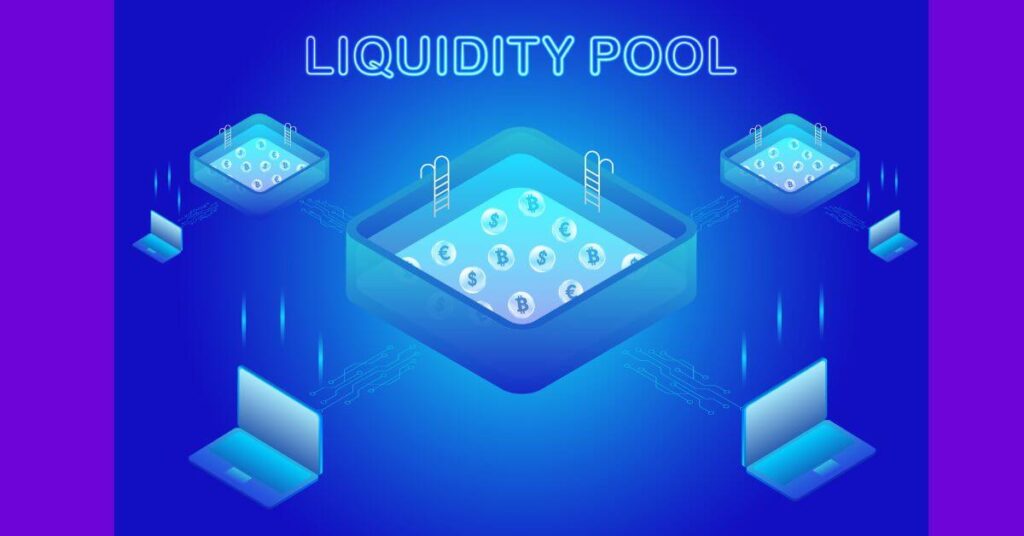The decentralized ecosystem has opened a door or a platform for various cryptocurrencies. Bitcoin, Ethereum, Cordano, and Theater are a few famous ones. Not only are there different cryptocurrencies, but also ways in which they can be used. The DeFi Lending basic ways for profiting from crypto are staking, yield farming, lending, selling, and buying tokens. All of these ways promise one common thing high returns; mostly, the reason for that
is the lack of third-party financial companies like banks. Yet, the great profits also come with risks, and before dwelling into the world of crypto, it is good to know them. Addressing each one of them separately will keep away from any monetary loss.
What is DeFi lending?
Table of Contents
The logic of DeFi lending is the same as having a savings account in the bank. When clients store their money in the bank, they earn profits based on the amount of interest. The same happens in the world of blockchain technology. They lock, stake, or lend their crypto in the liquidity pools of the DeFi lending platform. Both parties gain providers of liquidity get their desired returns. In addition to that, lending platforms like Uniswap or Sushiswap provide them with governance tokens fees from transactions conducted by other users. The DeFi lending platform gains the so-much-needed liquidity for the platform.
As there is no bureaucracy, the loans in decentralized platforms are executed the way quicker than in the traditional world of finance. The conditions of the loan are written in the smart contract codes. As soon as both parties meet the predefined conditions, the transaction is performed.
In the traditional world of finance, when X wants to get a loan, they typically offer the y physical asset caring equal amount. In the blockchain ecosystem, there is no way of having a physical collateral asset. Thus, users can only have another cryptocurrency as collateral. But the behavior of cryptocurrencies is relatively volatilely, this is one of the issues that increases the risks of DeFi lending.
What are the risks of DeFi lending?
Leaving behind the small problems and issues, blockchain-based platforms it is easier to address the major risks of DeFi lending.
Impermanent Loss
In DeFi protocols, when the process of staking or lending happens, two currencies are deposited in the liquidity pool. The work of liquidity pools depends on the Automated Market Maker system, which is used in any popular DeFi liquidity pool and requires users to keep a specific ratio of tokens 1:50. Thus if a user wants to invest ETH, they also need to invest an equal amount of LINK or another token which is required to keep the ratio stable. The creator of impermanent loss is the volatility of the market; when one coin drops in price, the stability of the ratio is shaken as a result.
Arbitrage traders also play their role in the impermanent loss. Arbitrage traders try to align the price of tokens in the liquidity pool with the one existing in the market. During the shift in the price of one of the tokens arbitrage traders tend to add the token of a higher value to the pool. The aim of arbitrage traders is to remove the lower-priced token from the liquidity pool.
Whenever the arbitrage traders add only one token to the pool, it changes the price ratio of the tokens. The situation results in a rebalance in the pool. Impermanent loss is sensable after the rebalance took place. The difference in the value of the liquidity pool and the value of assets in lending protocol doesn’t work in favor of investors. Still, the loss isn’t that tragic due to the fact that in the majority of lending protocols present investors with a respectful amount of shares from trading fees which covers the impermanent loss.
Flash Loan Attacks
Flash Loans are a new kind of loan in DeFi infostructure. Flash Loans divide into two groups secured loans and unsecured loans. Both types don’t require any collateral.
In the traditional world of unsecured baking flash, loans grant small amounts of money without any specific collateral. In opposed to that, secured loans grant a larger amount of money and request specified collaterals such as cars, houses, any other property, etc.
In Defi, smart contracts deal with the issue of client credibility and security that banks typically face when granting flash unsecured loans. But flash loans come with a dash of uniqueness borrowers have to repay the taken amount via the same transaction. If they fail to do, they don’t get the loan at all.
All this also comes with the threat of hackers. If the liquidity pool isn’t secure enough, then hackers can use it to manipulate the market.
DeFi Rug Pulls
Yes DeFi Development, Defi gives close to endless possibilities. Yes, it requires a certain amount of trust in the crypto project, but what are the guarantees that the project is actually going to succeed. Guarantees aren’t really there. Since there are no guarantees, it means that there is a high probability that scams will take place. Rug Pulls are one of the scam types.
Rug Pulls are exit scams that take place in the following manner. The developers create a new token attaching it to famous tokens like Bitcoin or ETH. After raising a certain amount of ETH in the liquidity pool, they shut down the project and disappeared with the money.
There is no way to make any rewards in the crypto world without some risks. So, it is wiser to choose a savings investing plan and ensure making income in a safe way.



